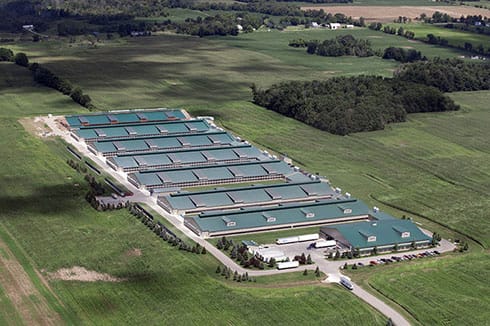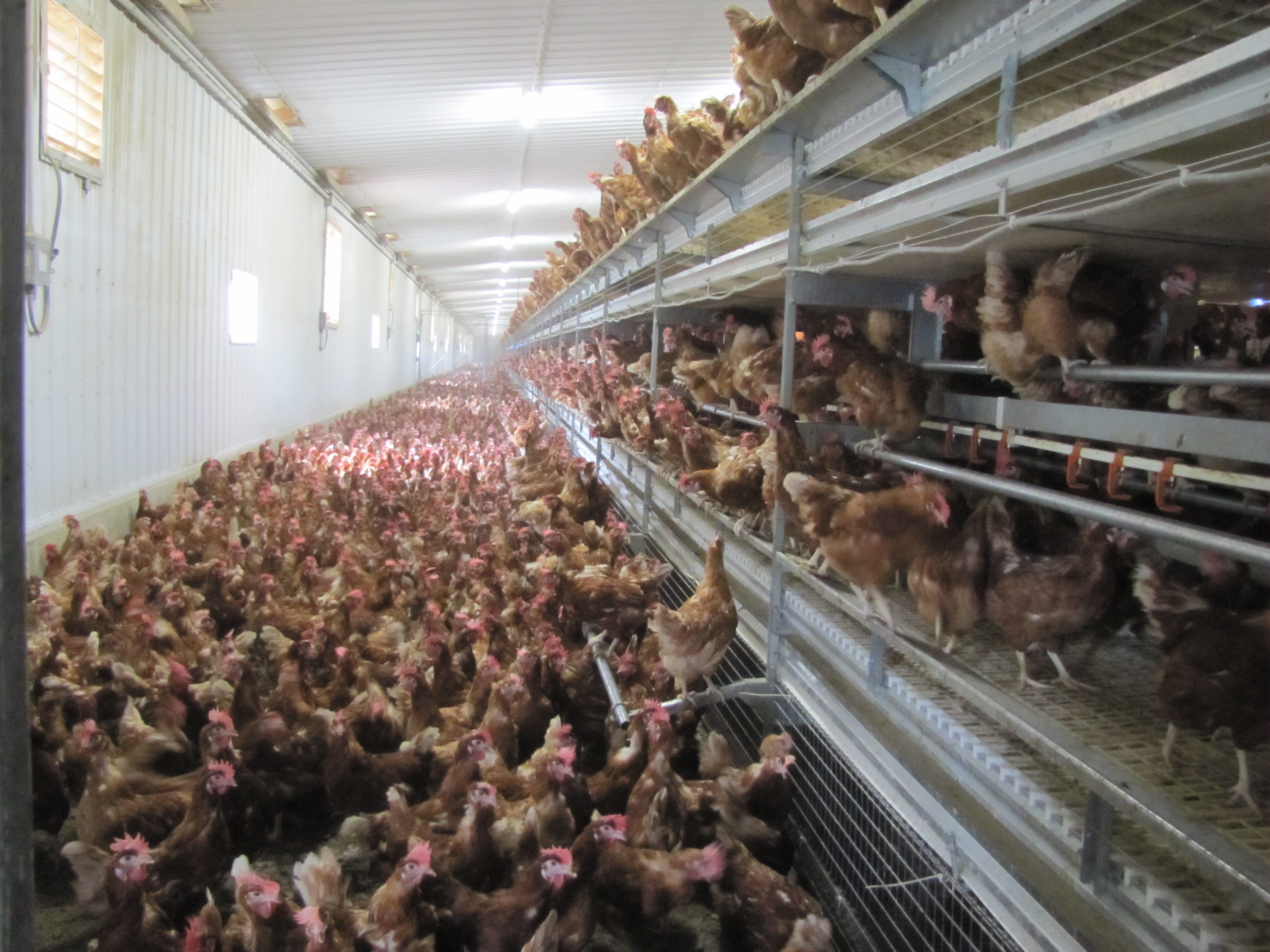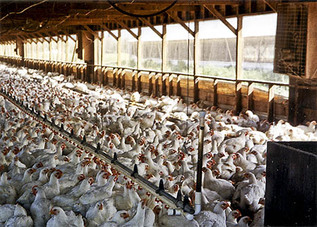New Rulemaking Capitulates to Industrial Livestock Interests
On January 18 the USDA announced the publication of new regulations purportedly improving the welfare of livestock on certified organic farms. The law, years in the making, was sparked after wide outcry from family-scale organic farmers, and their consumers, concerning “factory farms” producing organic milk, meat, and eggs.
“This rule is a result of the USDA’s failure to enforce the clear standards in the current organic regulations that require all livestock to have access to the outdoors,” said Mark Kastel, Senior Farm Policy Analyst at The Cornucopia Institute, a farm policy research group that acts as an organic industry watchdog.
“The USDA has intentionally been allowing giant scofflaws in the industry, the largest conventional egg companies in the country, to provide minute enclosed porches as a legally accepted substitute for their animals being allowed to exhibit their natural behaviors outdoors,” Kastel added.
The following quotes can be attributed to Mr. Kastel (photo upon request):
The USDA claimed, for years, that the requirement for outdoor access was ambiguous and unenforceable. The delay in enforcement, and foot dragging in new rulemaking, has allowed the industrial egg production sector to control an estimated 80-90% of organic egg production (this figure is from public testimony given by the industry lobby group, United Egg Producers).
 |
Intentional misinformation disseminated by the USDA when introducing these new benchmarks states that the vast majority of organic egg farms currently comply with the requirement for outdoor access. This statement is likely factually correct. However, with industrial egg “farms” confining as many as two million birds each, the percentage of production which is now in compliance with the law is, unfortunately, minimal.
The new USDA standards, in terms of space requirements for organic laying hens, mandate only 1-2 ft² indoors for each animal. A 1 ft² figure pertains to industrial-scale aviary structures with birds stacked floor-to-ceiling. This is the industry standard for conventional chickens — affording organic animals no higher level of welfare!
 |
 |
However, this disadvantages family farmers by requiring them, mostly in single-story buildings with “floor birds,” to provide 2 ft² each — a much higher number than the industry standard of 1.2 ft² and even higher than the country’s leading organic egg marketer, Organic Valley, which requires 1.75 ft² on each of their cooperative’s farms.
In broiler houses birds will be afforded only approximately 1 ft² (based on weight).
In terms of outdoor access, producers will only need to offer approximately 2 ft². In this case, Organic Valley requires 5 ft² per bird outside, and has proven that to be commercially viable.
NOTE: To illustrate how woefully inadequate 2 ft² is outdoors, to qualify for organic labeling in Europe hens need to be provided a minimum of 43 ft² — and although slightly more expensive, the market penetration for organic eggs in Europe is higher than in the US.
While the rule mandates outdoor access, it is lacking in specificity in adopting procedures that actually encourage birds to go outside. If all of their food and water is inside, few birds will venture out. Currently, when medium-scale producers do supply outdoor access, only 3-5% of the birds venture outdoors at any given time regardless of the space provided.
The USDA is allowing the largest industrial “organic” egg producers five years before phasing in the requirement for outdoor access — in an industry where the average production life of the flock is only one year. This will seriously undermine market forces that would otherwise encourage entrepreneurs to develop additional egg production and facilities that meet the spirit and letter of the law — meeting increasing market demand as scofflaws are forced to exit the industry.
For dairy cattle, the USDA listened to widespread criticism of the draft rule and removed the requirements that cows have enough space to be able to turn laterally in their stalls. This would have resulted in cows urinating and defecating on their bedding, risking their health and procedures to maintain the sanitation of milk production.
The new rule also clearly prohibits cutting off the tail of dairy cows (“docking”), a practice on some industrial-scale operations claiming it improves sanitation.
Hard to believe that it could be organic, but the requirement for hogs to have outdoor access on soil and vegetation has been eliminated. Thus, these intelligent animals can be confined to buildings or small pens outside, on concrete or a manure pack, for their entire lives. This seems to be legally inconsistent with the organic standards requiring that all livestock be afforded and ability to exercise their natural instinctive behaviors.
A more comprehensive analysis of the new regulations is available at www.cornucopia.org.
Cornucopia staff is available to answer additional questions or for exclusive quotations: 608-625-2042.
The Cornucopia Institute maintains a comprehensive report on the organic egg industry, along with a scorecard rating all certified organic brands, including ones that go far beyond the minimum standards set by the USDA.
MORE:
This rule only applies to organic laying hens and broilers. Minimum benchmarks for turkeys and other poultry breeds will be added at a later date.
The USDA received 6675 written comments on the draft rule and an additional 102,000 signatures on petitions, primarily from animal welfare groups.
A major loophole has been created by allowing producers to continue to use porches and count them toward indoor space. However, if food and water are not available in the porches few chickens will utilize that space with the default being confined in substandard conditions. If the porch creates a buffer between the outdoor space and the main production building, even fewer animals will actually, as the law requires, be in a position to exhibit their natural instinctive behaviors (foraging — scratching at the ground and eating weeds, grass, seeds and insects).
Alterations in hogs—cutting off tales (docking) and teeth clipping—will still be allowed when documented cases of aggression and injury to animals occur. This is unfortunate because on the highest welfare organic farms, hogs are under less stress, and these physical alterations are not necessary. This is a crutch that will enable industrial confinement facilities to continue to operate.
Minimal beak trimming will again be allowed in poultry. This practice also is generally not necessary in flocks that have true outdoor access and are not densely housed.
The USDA refused to intervene in the choice of breeds, which is especially unfortunate for broiler chicken. Currently, many industrial producers choose breeds that quickly develop enormous breasts in proportion to the rest of their body weight. This causes disproportionate suffering and mortality as animals literally “break down.”

